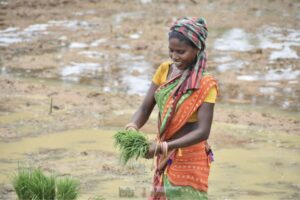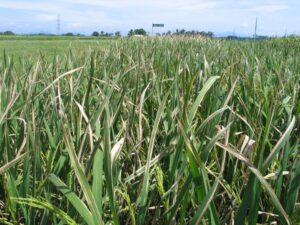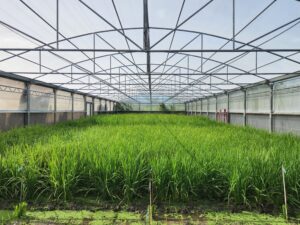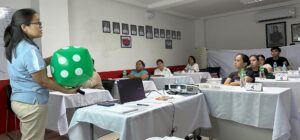Seong-Yool Lee, mayor of Cheongdo County, South Korea, visited IRRI on 11 November 2015 to learn about the historical relationship between Korea and the Institute. The Government of the Republic of Korea has been working with IRRI since 1964. The collaborative research between the Rural Development Administration (RDA) and IRRI resulted in the development of Tong-il rice varieties.
In 1965, Mun-Hue Heu, while working with Dr. Hank Beachell, then head of IRRI’s Plant Breeding Division, made the first cross between a japonica variety and indica variety. From the resulting hybrid, Dr. Heu and a team of scientists from RDA eventually developed the breeding line IR667-98-1-2-213-1, which was released in Korea as “Tong-il” in 1973.
Tong-il played an important role in Korea’s Saemaul Undong (the New Village Movement), which started during the 1970s. The rural community-driven development program was subsequently linked to the Green Revolution as a rural development strategy in Korea. It focused on the role of agriculture in providing food, particularly food staples such as rice.
Saemaul Undong defined poverty as the lack of calories measured by the income needed to sufficient amounts of rice to sustain life, according to Mike Douglass in his paper, The Saemaul Undong in the context of rural development theory and practice. Pre-colonial communal traditions shifted to formal economic sector development approach focusing on an emerging Green Revolution in grain production, Douglass noted. Villages in Korea were renovated and the rural economy grew rapidly.
“Tong il helped Korea overcome food shortage and achieved rice self-sufficiency,” said Jeom-Sig Lee, a senior scientist at IRRI seconded from RDA. “That is why Korea puts much importance on its relationship with IRRI.”
Learn more about IRRI (www.irri.org) or follow us on the social media and networks (all links down the right column).











